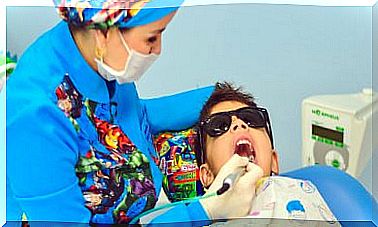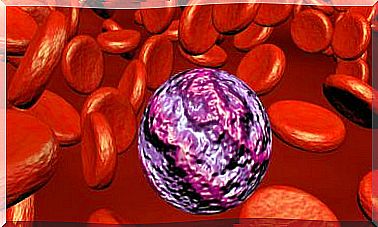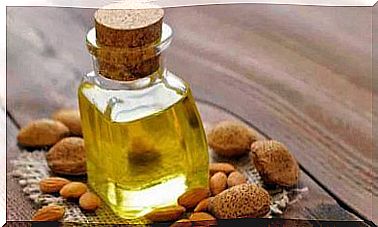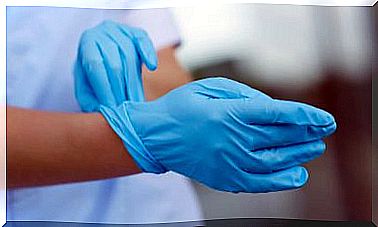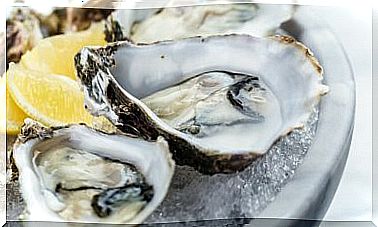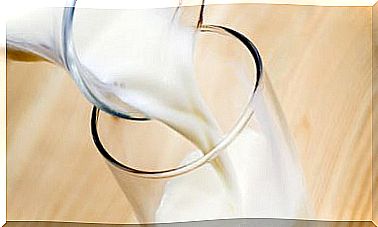Treatment For Patients With Elbow Bursitis
Treatment for elbow bursitis is based on physical measures, rehabilitation with physiotherapy and medications, if necessary. It is not a pathology that always responds in the same way to all the alternatives, nor can it be left to its own evolution.
Many believe that this inflammation of the joint is temporary or is related to a blow in the place, of those traumas that happen in daily life. However, these conditions are not always met, and sometimes an infection hides behind it.
What is elbow bursitis?
The word bursitis is used to name the inflammation of the articular bags, wherever they take place. Where there is a joint, there is surely a joint bag that the body uses to reduce friction.
In the specific case of elbow bursitis, the inflamed bursa is the one that separates the olecranon from the skin. The latter is the bony part that we palpate at the end of the elbow when moving it, and it belongs to a part of the ulnar bone.
Once the inflammation of the joint bag set in in the elbow, the pain is intense and persistent. It increases when we use the joint, both in extension and flexion. Palpation is also uncomfortable, and in more serious situations, clothing sleeves stimulate nerve endings.
It is common for the elbow to become enlarged and inflamed, which changes the color of the skin to a reddish or pink hue. The movements are limited somewhat by the pain, and the same by the internal accumulation of fluid that obstructs the angles of the area.
Patients tend to seek analgesic positions, in which the elbow does not contact another surface and the upper limb rests without generating weight. It is common for them to carefully lean on tables or support one arm with the other.
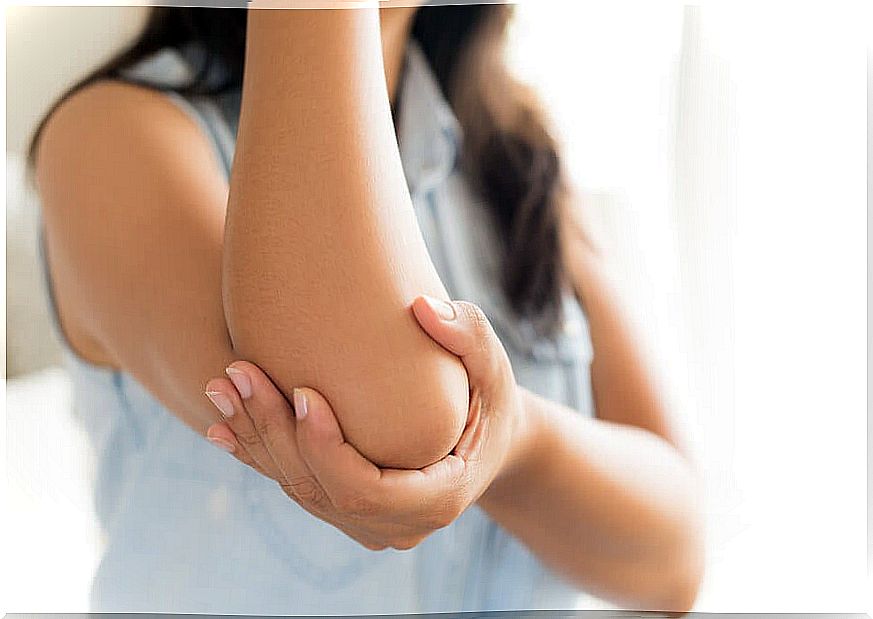
Treatments for patients with elbow bursitis
The treatments used in elbow bursitis are mostly conservative. It is intended to help the body resolve inflammation through its own resources.
Medication will be indicated when the pain is severe or the cause is determined to be an infection. In that case, antibiotics are the drugs of choice based on the medical prescription.
Joint rest
As in many traumatic diseases, with the treatment of elbow bursitis it happens that rest is a great ally. In this case, it is not a question of total prostration, but of ensuring that the elbow is relaxed for most of the day and does not make joint efforts.
To achieve this, slings can be used, as long as the person supports contact with the skin. Large braces are not needed, but a simple fabric winch that is tied around the neck is enough.
The rest time will vary according to evolution. There are elbow bursitis that resolve in less than days, and others that take up to a month of follow-up for their total resolution.
Cold and heat
The use of heat and cold on inflamed joints is a classic of trauma. As a general rule, cold is useful in trauma and inflammation with signs of redness and an increase in temperature, while heat restores circulation in the long term.
For the treatment of elbow bursitis it is effective to alternate hot and cold. Cold is usually indicated in the first 48 hours after symptoms appear, to accompany the subsequent days with heat, so that blood flow increases and accumulated fluid is released.
Anti-inflammatories
Non-steroidal anti-inflammatory drugs are the drugs of choice to carry out the treatment of elbow bursitis. Its use should be limited in the number of days and take some precautions to minimize its gastrointestinal side effects.
They are adjuvants of the de-inflammation process that the body itself executes. Therefore, they do not represent the pillar of the approach, but a complement. Together with the alternation of cold and heat, they stimulate the drainage of fluid from the inflamed bag.
Combination with pure painkillers is possible, such as codeine. There are even commercial preparations that are sold in pharmacies with both drugs in the same pill.
As always, the orthopedic surgeon should prescribe the medication and adapt it to each patient. Self-medication can mask symptoms and delay adequate therapy, even hiding an infectious process.
Antibiotics
The staphylococcal variety is the one most commonly found in infected elbow bursitis. Therefore, the antibiotics that are prescribed when an infection is suspected are to treat these bacteria.
Sometimes the infection appears as an addition to the traumatic process that has already begun. In other cases, the bacteria invade the elbow through small wounds in the skin, and settle in the joint bag to form colonies that lead to pus and eventually bursitis.

Physiotherapy
Treatment of elbow bursitis with kinesiology and physical therapy is recommended. Beyond medication, hot-cold alternation and joint rest, rehabilitation sessions are essential for adequate recovery.
The techniques that can be used are varied. There is also the possibility that the patient is educated to perform the exercises at home and further stimulate the healing process.
In physiotherapy sessions, professionals use massages, manipulations and physical means, such as ultrasound waves. Communication between the treating traumatologist and the kinesiologist is key to advance a joint approach according to the diagnostic suspicion. An infected bursitis is not the same as one that is not.
Elbow bursitis treatments aren’t unique
There is no single approach to elbow bursitis. Each case is particular and needs a detailed assessment. A professional team will determine which of the alternatives is the best for the patient, and how to combine them to achieve the best result.
In general, it is a pathology with satisfactory solutions, so you should not delay the consultation if you perceive inflammation in your elbow or limitation of movement. It may take only 15 days for you to regain full functionality if you follow the treatment.
